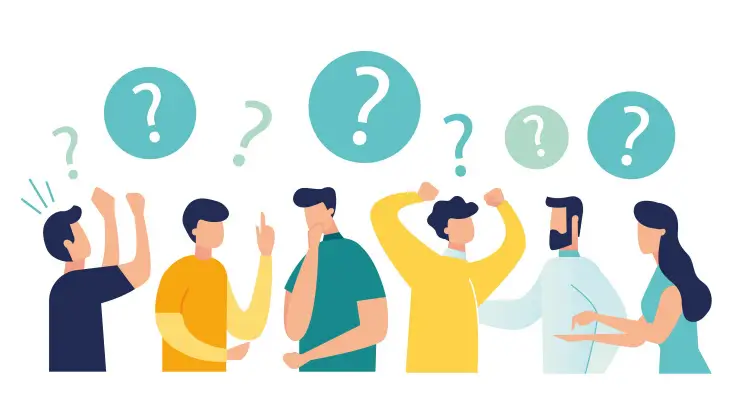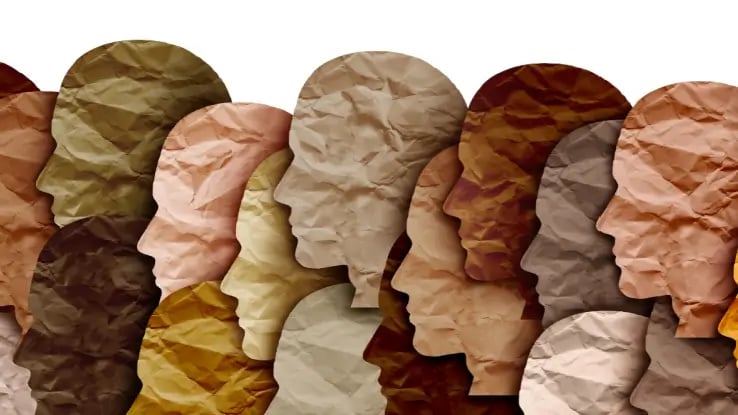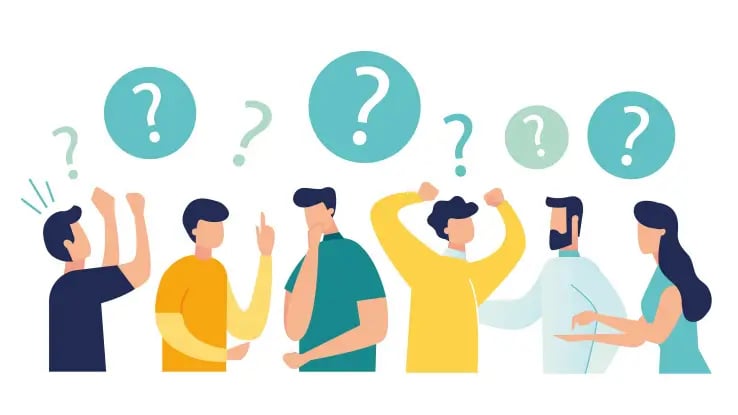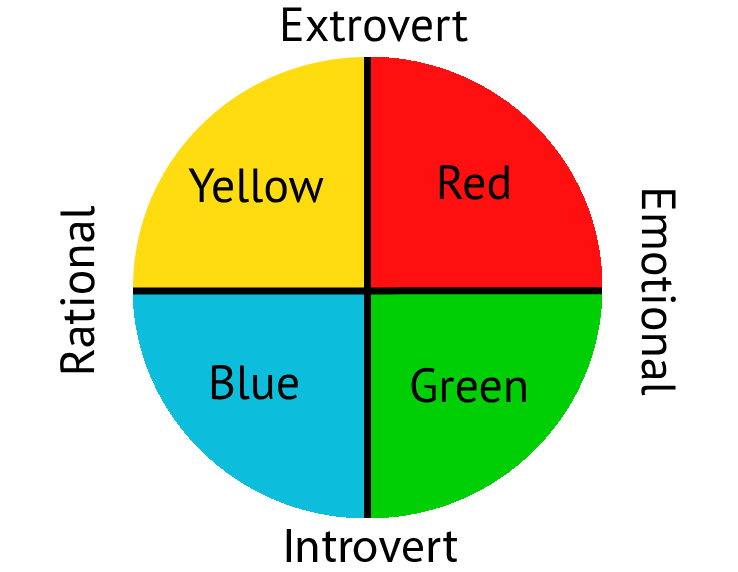How Trusted Shops Strengthens the AI visibility of your Online Shop
Learn how Trusted Shops enhances your online shop's AI visibility through trust-building elements such as customer reviews and the Trustmark.

As a retailer, you have to deal with many different customers from both a sales perspective as well as a customer service perspective. Sometimes customers know exactly what they want, while others may not know what they are looking for at all. In order to satisfy their needs (and yours!), using the right approach when helping these different customer types is fundamental. Although you may already recognise some of them subconsciously, it is better to be aware of them categorically.
In this article, you'll learn about the different customer types when it comes to both sales and customer service interactions.
We’ve split our guide up into the sales and customer service groups. Although we recommend you read the entire article, you can also feel free to skip ahead to any section you find particularly interesting:
Before we learn about the different customer types in sales and customer service, let's consider how you can recognise customer types in the first place.
You should theoretically be able to recognise a person's customer type on the phone quite quickly.
It's the way someone speaks or by certain information given. If someone asks very specifically how something works, you can assume that they are an end user, for example.
In text form, it is harder to figure out what the customer types are. Think of e-mails or reviews, for instance. In such a case, it is important to assess the context and try to figure out which customer type it is. It is therefore important to also leave clear notes for each customer for your customer service team. This will make contact with them in the future easier.
With reviews, it is very important that you have the right customer type in mind, because it is not only a customer contact, but it's also a public one. Therefore, it is also your calling card for future customers.
Did you know that many customers read reviews before placing an order? So make sure you use a review platform that collects authentic customer reviews (like Trusted Shops).
Before we begin looking at customer types from a sales department perspective, keep in mind that many of these customer types and our tips work in physical stores well.
When talking about customer types in the context of sales, we refer to a generalisation of how a customer behaves when purchasing a product. Since it’s a generalisation, keep in mind that a real-life customer can have characteristics of several types.

Shutterstock/Lightspring
If you know which group your customer is in, it is easier for you to anticipate how your customer will respond to your sales techniques.
This way, you can ensure that you help the customer as much as possible and encourage them to buy your product more efficiently.
Classifying different customer types helps you get the most out of the interactions and will eventually lead to more sales.
First of all, we can break our different (sales) customer types down into two main phases before segmenting them: the orientation phase and the determined-to-buy phase.
During this phase of the shopping journey, customers are still considering what they want to buy or they might not even sure whether the purchase is necessary at all.
This is a difficult phase because you not only have to convince the customer to buy something, but you also have to convince them to buy it from your shop. Be prepared to ask them specific questions to help them figure out what they are looking for.

Shutterstock/Roman Samborskyi
Sometimes, of course, the customer already knows what they want, or that they want to buy from you. These customers will make their intentions clear, which will help you in the next steps.
The decision maker is someone who is ready to make a final decision. It is important that you listen carefully to what this person wants and you need to respond to it.
When it comes to B2B sales, these customers are often people who are higher up in the hierarchy of a company. Make sure you highlight what differentiates you from the competition. Explain the advantages and disadvantages of certain products or your service.
Besides highlighting the quality of your products or the price you offer, let them know, for example, that your online shop is more sustainable or greener compared to your competition.
Recommended reading:
How to Differentiate Your Shop from Competitors Selling the Same Products
The economic buyer is someone who is bound by specific restrictions, such as their budget.
They are therefore not always looking for the very best option, but preferably opting for the cheaper option which meets their requirements.
These types of customers are usually managers, but consumers can also be in this category. Make sure that you only offer products that are really within budget to this customer group. Otherwise, the customer won’t feel taken seriously.
Speaking of budgets… learn how to get the most out of your marketing budgets by displaying star-ratings throughout Google (including your Google Ads). Download the whitepaper:
The recommender doesn’t always have to be the person who eventually completes the purchase. Sometimes, you might be dealing with a person who’s looking out for other parties involved.
The recommender eventually influences other people to purchase. They will ask fairly sceptical questions, which is why it's important that you’re prepared and have an answer to all of their questions.
Remember: if you don’t know an answer to their question right away (e.g. when a product will be in stock again), you need to let them know you’re happy to find out and get back to them with the information. This will convince customers that you are an expert, experienced, and honest retailer!
It can also be helpful to display a trustmark or certification (such as the Trusted Shops Trustmark) in your online shop. This shows potential customers that your shop is reliable and can therefore be recommended.
Recommenders are also very likely to leave reviews for your business.
Influencers are almost the same type of customers as the recommenders. However, they have less influence on a final decision, but do have the power to influence.
It is important that you help them on a personal level in order to give them a positive feeling about your company and your products.
The end-user is the person who will ultimately use the product or service you offer. End-users are usually less concerned with price and appearance, but rather with functionality.
They really want to know how your products and services work and why they should choose you instead of your competition. In other words: they want information.
Sometimes you also have to deal with so-called saboteurs. These people can be customers who don't actually want to change anything. Think, for example, of someone who has used a specific phone for years. Now, that phone is broken and that specific model is no longer available. This person actually wanted to buy that model again, but now has to make a different choice.
Saboteurs are also people you don't talk to, but who are influenced by the purchase of a product. For example, a person who must buy a machine that will influence or replace that person's job/tasks. Keep this group in mind when talking to someone.
This group of customers refers to those who already know that they want to buy and that they want to buy from your online shop. These people only need help with final details and information in order to complete the purchase.

Shutterstock/Asier Romero
There are several interested customers who would like to make a purchase and contact you for specific information. Here are 5 examples of customer types in the purchase phase:
The targeted or deliberate buyer knows exactly what they want. They only want this particular thing.
It may be difficult to apply up- or cross-selling techniques to sell even more to that person if these other products don’t match the main purchase. When it comes to this group of buyers, make sure that you don’t push too hard. You may lose this buyer if you overdo it.
Some customers contact you because buying online is like a real experience for them. It is important to make these customers feel extra important and provide them with a special user experience. Let them know you appreciate their expertise even if they’re not at your level.

Shutterstock/VGstockstudio
When getting in touch with them, you could, for example, throw in a little extra something for them. Think of a promotional product or promo code for family and friends. This strategy will encourage them to talk about your brand and motivate others to buy as well.
Just make sure you provide these customers with a shopping experience they've never had before!
Some customers see products online, but want them in a different format, size or colour than the one that's offered.
As an example, just think about people asking for extra cheese or gluten-free dough when at a pizza restaurant.
In e-commerce, these customers prefer to have some or most of the details of your product to be adjusted or personalised.
Honestly, it is not a bad thing if you can pass on the extra effort you have to make in the price, but of course, try to avoid raising the price too much.
Also, remind the customer that the standard version of the product is already in stock and can therefore be delivered more quickly. Let them make the decision.
It is possible that this customer type will also try to reach out to you in this phase of their shopping journey.
When a decision has to be made, this group often tries to get extra discounts. However, beware: if you give them an inch, they’ll (attempt to) take a mile. On the other hand, if you don't give enough, they will walk away and buy from other online shops instead.

Shutterstock/Viktoria Kurpas
Basically, this is about your gut feeling: is this customer important enough to provide them with a big discount? If you don’t want to hand out discounts, you can also offer them cheaper alternatives of the product they want (if you sell alternative products).
Sometimes a customer contacts you because they have already made a choice, but still need you to confirm it was the right one.
Another possible situation would be that customers seek your support with technical issues that have prevented them from completing their order.
This is a customer you have to “protect”! It will probably be easy talking to that person, but it might be best to just be honest with your customer. Think for example of an older person who is looking for a new phone (e.g. like in the example mentioned above). If you recommend a simple, cheaper model, and explain that an elaborate, expensive one isn’t even necessary at all, the customer will surely be grateful and happy with your honest service. Customers will then be more likely to buy from your shop again or recommend you to friends.
Recommended Reading:
4 Ways to Turn One-time Shoppers into Repeat Customers
Before we dive too deeply into different customer types for customer service, it is important to stress that we are talking about "types" here. Again, real-life customers might not fit perfectly into any single one of these categories. Also, bear in mind that customers can change their behaviour during a conversation because of how you treat them.
Similar to customer types in the sales context, customer types in the customer service context are generalisations of how a customer behaves when interacting with you or your customer service agents.
Recommended Reading:
E-Commerce Customer Service: In-house or Contact Centre?
Knowing what type of customers you’re dealing with when it comes to customer service issues can be incredibly helpful for you and your customers. At the end of the day, you want to make your paying customers happy.
This improves the chances that they come back to you as a loyal customer. It also improves your chances of getting a better online reputation. A happy customer will sing your praises even if the beginning of their journey was a bit rocky. Those customer reviews tend to be the most interesting for other potential shoppers.
Speaking of reviews, make sure you know how to handle negative customer reviews. Turn a negative experience into a positive reflection of your customer service! Download our guide below!
Compared to customer communication during the sales process, when we refer to customer service, it’s important to remember that the order has already been completed when they reach out to you.
Therefore, this interaction is fundamentally different to sales conversations.
Basically, customers can be classified into four groups: Extroverts vs. introverts and rational vs. emotional customers.

Typically, a common customer type in customer service is both extroverted and emotional. When talking to people like this, you’ll find they wear their hearts on their sleeves and won’t avoid conflict.
Try your best to avoid getting into an argument with a customer like this. Instead, opt for a normal conversation.
"I totally understand you aren’t happy that the parcel didn't arrive on time, so I am going to do the following to solve the problem for you" is a phrase you could say to this person.
By doing so, you’re showing both empathy and support. Empathy is particularly important when it comes to this customer group! Even if the customer is wrong, it’s not a good idea to point this out to them.
Positive phrasing is highly recommended. Phrases such as "You're welcome" are encouraged.

Shutterstock/stockfour
Customers like this have shown to react very positively to the phrase "Thank you for getting in touch with us". Let them know that you appreciate them reaching out to you and that you’re taking their concerns very seriously. Keep in mind that what may seem like a minor problem to you may be a major problem for the customer!
It has also been proven pointless to give your opinion on a specific topic if it doesn’t match the customer's. "I understand your feelings, so I'll look for a solution right away" would be a better fit in a situation like this.
The customer is seeking confirmation since they may often be insecure and need to be reassured by you.
Rational introverts are basically the complete opposite of the emotional extroverted customer type. This customer persona tends to be quiet and seeks precise information. You will recognise this type as they immediately have their order number ready and/or are ready to briefly explain what their problem is about.
Just tell them exactly what you are going to do and how much time it will take to solve the issue. Let them know if you will have to call them back later and when that will be. Create realistic expectations.
If you don’t deliver what you have promised, this can do a lot of damage to the trust of these customer types and they will most likely not buy from your online shop again.
This customer is both extroverted and rational. These are people who call because their expensive phone is broken, but aren’t angry.
Usually, you can joke and have a nice conversation with them. Do that! Especially if one of your goals is a great Net Promoter Score (NPS), a fun conversation with this customer type can really help you achieve this goal.
Recommended Reading:
What is Your Net Promoter Score (NPS)?
Try to be cheerful and have a chat with them. They will also appreciate it when you recall what you talked about at the end of the conversation in a follow-up email or in a call-back.
Now let’s talk about customers that are both introverts and emotional. They appreciate it when you show empathy and sympathy. This customer probably won’t ask many questions, which is why we recommend you to provide them with enough information.
You could ask things like: "Do you understand what I mean?" and at the end of the conversation: "Do you have any further questions?"
An emotional introvert usually needs encouragement to start the conversation and sometimes feels embarrassed to even call customer service in the first place.
This customer type is often the most loyal customer and a good conversation with you can really make the difference: will they remain loyal to your brand or buy from another shop in the future? It’s up to you!
Recommended Reading:
What Kind of Loyalty and Rewards Systems Work for Small Businesses?
Knowing how to sell and help customers is something that can be learned, but it is also something that involves a lot of social skills and experience.
The different customer types as presented today will help you get an idea of what to expect and how to deal with these customer types. However, the most important thing is that you need to take your customers seriously and do your best to help them. This is the best method to keep a customer loyal to your brand.
This article was originally published on our Dutch Trusted Shops blog: Verkoop meer en verbeter je service met klanttypen
17/01/24Learn how Trusted Shops enhances your online shop's AI visibility through trust-building elements such as customer reviews and the Trustmark.